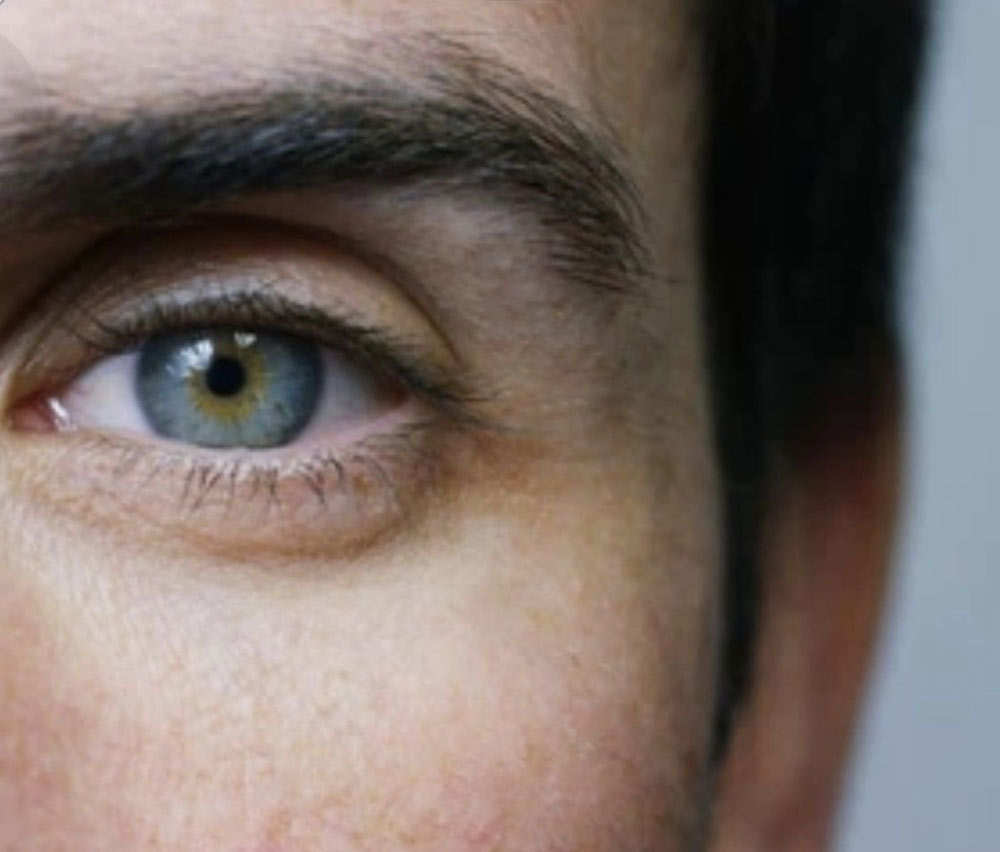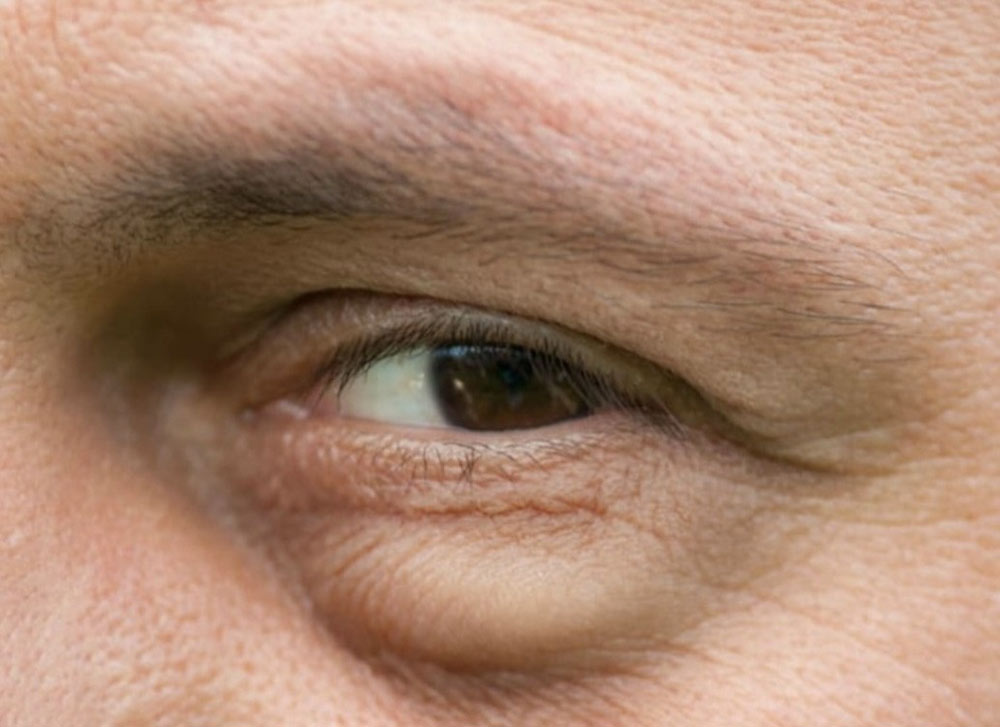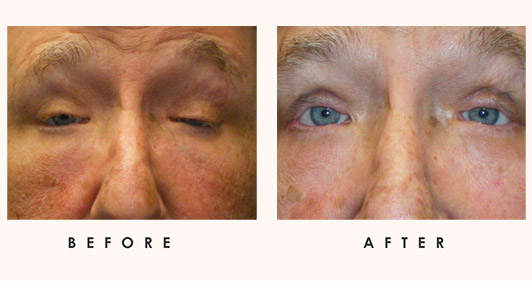Lacrimal System Anatomy
Jump To
The eyelids consist primarily of skin, subcutaneous tissue, muscle called the orbicularis oculi, and the fibrous orbital septum and tarsi underneath. Lid retractors help open and close the eyelids, and the eyeball is covered by the conjunctiva. Eyelids protect the eyeball from injury, control light, and send signals to the lacrimal gland to lubricate the eyeball with tears (through blinking). These functions together help maintain the integrity of the eyeball.
Anatomy of the eyelid
The description above only offers a superficial overview of the anatomy of the eyelid. In more detail, a sagittal section taken across the eyelid offers a clear view of the various structures that form it. The tissues can be divided into planes by structures called the septum. The orbital septum differentiates the orbital tissue from the lid. Behind the septum are a number of different other structures, a knowledge of which is essential if surgery is to be performed. In particular, it is essential to identify the anterior and posterior lamellae. The anterior lamella consists of the skin and the orbicularis oculi muscle, while the posterior lamella consists of the conjunctiva and the tarsus.

The eyelids
The upper eyelid originates at the eye and extends up towards the forehead, and it is distinguished from the forehead skin by the presence of eyebrows. Similarly, the lower eyelid starts at the eye and extends to join the skin of the cheek.
The top of the upper eyelid includes a skin fold/crease called the superior palpebral sulcus, which is 8-11 mm above the upper eyelid margin and includes the levator aponeurosis. The lower eyelid skin fold lies 3-5 mm below the outer aspect of the lid margin and is called the inferior palpebral sulcus. This is often more prominent in children and can become less prominent as one ages.
The inner part of the eyelid is called the inner canthal region, and includes a fold of skin called the nasojugal fold, which is located between the orbicularis oculi and the levator labii superioris. The nasojugal fold, also called the tear trough, is where tears roll down and can accumulate. The malar fold runs from the outer aspect towards the nasojugal fold.
The fusiform, or the palpebral fissure, is the space between the upper and lower eyelids when the eyes are open. It usually measures between 28-30 mm wide and around 9-10 mm in height. The highest point of the fissure lies at that point on the upper eyelid that corresponds to the inner aspect of the pupil. The upper eyelid of younger people is slightly higher than older individuals.
The medial canthus and the lateral canthus are the two points at which the upper and lower eyelids meet. The one on the inner aspect is the medial canthus, and the one on the outer aspect is called the lateral canthus. Both have unique angles where the upper and lower eyelids meet. The medial canthal angle is located 2 mm lower than the lateral canthal angle in Caucasians and is usually 3 mm lower in Asians. The nose lies around 15 mm on the inside of the medial canthus.
Skin and subcutaneous tissue
The eyelid contains the thinnest skin in the body, roughly 1 mm thick. Sebaceous glands in this thin skin secrete an oily substance called sebum. These glands are in larger numbers at the nasal aspect of the eyelid. Below the skin is a layer of thin connective tissue called a subcutaneous tissue (sub = under, cutaneous = skin) along with a thin layer of fat. The skin and subcutaneous tissue can be subject to medical conditions like dermatochalasis and blepharochalasis.
Orbicularis oculi muscle
The orbicularis oculi muscle is critical to eyelid function and facial expressions. When this muscle contracts/relaxes, skin moves as well. The orbicularis oculi muscle attaches to the skin through fibrous tissue that form the superficial musculoaponeurotic system. The orbicularis oculi muscle has pretarsal and preseptal segments, and the palpebral portion helps us wink and blink. The orbital part of the orbicularis oculi muscle is linked with other muscles responsible for facial expression.
Submuscular areolar tissue
The submuscular areolar tissue is a loose connective tissue beneath the orbicularis oculi muscle. Anatomically, it forms a plane that divides the eyelid into a front (anterior) and back (posterior) portion. The fibres of the levator aponeurosis pass through this plane in the upper eyelid. A small portion of these fibres make up the upper eyelid crease. Similarly, in the lower eyelid, the fibres of the orbitomalar ligament pass through this plane.
Tarsi and Orbital septum
Tarsal plates
Tarsal plates are dense fibrous tissues that help the eyelids maintain their shape and integrity. The two main types of tarsi are the superior tarsus and inferior tarsus. The superior tarsus makes a crescent shape, measures around 10mm vertically in its central aspect, and narrows as it traverses towards the nose and outer aspect of the eyelid. The inferior tarsus lies in the lower eyelid and is in contact with the conjunctiva. Each of the tarsi are attached to the margin of the orbits through the medial and lateral palpebral ligament.
Medial palpebral ligament
The medial palpebral ligament is also called the medial canthal tendon (MCT) and consists of fibrous tissue that holds the inner aspect of the tarsal plates in place. It relates closely to the orbicularis oculi muscle and the tear ducts. The MCT is comprised of an anterior limb that is formed by a small part of the superficial part of the orbicularis muscle lying behind the tarsus. It travels in a horizontal plane and also attaches to the frontal bone through a superior extension. The deeper part of the orbicularis muscle connects to the back part of the lacrimal crest and the lacrimal sac fascia.
Lateral palpebral ligament
The lateral palpebral ligament is also called lateral canthal tendon (LCT) and consists of fibrous tissue that starts at the tarsus, travels outwards under the orbital septum and connects to the lateral orbital tubercle. The orbital septum and the LCT are separated by a pocket of fat called the Eisler pocket. The LCT is attached to the outer part of the orbital rim through a superficial plane of fascia. This is also known as the superficial lateral canthal tendon and helps to keep the lateral canthus stable.
Orbital septum
The orbital septum is a connective tissue band that attaches to the border of the orbital bone at the periosteum, or the outer aspect of a bone. The septum joins the lid retractors at the lid margins. It contains layers that are linked to the anterior connective tissue framework. The septum has mobility similar to the eyelids.
The orbital septum is separated from the LCT by Eisler’s pocket of fat. Traveling laterally, the septum runs along the rim of the orbit at the arcus marginalis. Towards the nose, the septum runs across the supraorbital groove, in front of the trochlea and along the posterior lacrimal crest. This position results in the septum lying in front of the medial check ligament and behind the lacrimal sac and Horner’s muscle.
The septum passes through the lacrimal sac fascia and reaches the anterior lacrimal crest at the lacrimal tubercle. It passes below the crest and along the lower rim of the orbit, leaving the rim beyond the zygomaticomaxillary suture. This results in the creation of a small recess due to its separation from the zygomatic bone and is named the premarginal recess of Eisler (filled with fat). The septum eventually reaches the lateral orbital margin just below the Whitnall ligament.
ORBICULARIS RETAINING LIGAMENT
The orbicularis retaining ligament is also named the orbital retaining septum or orbitomalar ligament. This ligament attaches the lower rim of the orbit to the orbicularis oculi muscle. It is continuation of tissue that is formed by fusion from outer part of the orbicularis oculi and the periosteum and temporalis fascia. The fusion is marked by orbital thickening, which covers the frontal part of the zygomatic bone. As we age, the orbicularis retaining ligament thins out and stretches.
Upper lid retractors
The upper lid retractors are comprised of a muscle group that functions to keep the upper eyelid elevated. The levator palpebrae superioris (LPS) is central to this function and originates from the bottom part of the sphenoid bone. It consists of the levator muscle and the superior rectus muscle and is joined together by fibrous tissue.
The Whitnall ligament is similar to the orbital fascia and is close to the aponeurotic and muscular junction of the LPS. It extends around the upper margin of the orbit in an area that lies between the lacrimal gland fascia and the trochlea. The LPS has variable thickness, but is thin in areas between the upper orbital rim and the Whitnall ligament. The LPS aponeurosis forms medial and lateral horns. The lateral horn runs through the lacrimal gland, divides into the palpebral lobe and the orbital lobe and then attaches to the lateral retinaculum at the lateral orbital tubercle.
The aponeurosis reaches the border of the superior tarsal plate having fused initially with the orbital septum. At the bottom of this fusion, a small part of the aponeurosis connects to the lower aspect of the anterior part of the tarsal plate. One part of this fusion extends forward to attach to the pretarsal orbicularis oculi muscle and skin, resulting in the formation of the skin crease in the upper eyelid.
Fat Pads
Several fat pads exist around the upper eyelids. One layer of fat called pre-aponeurotic fat is behind the orbital septum and in front of the levator aponeurosis. There are two more areas that contain fat pads, centrally and medially located. The medial fat pad is pale yellow and is located in front of the levator aponeurosis. The central pad of fat is broader and yellow in color. It wraps around the inner portion of the lacrimal gland, which is distinguished by its pink color and lobulated structure. The lacrimal gland is positioned posteriorly to the orbital margin but can prolapse, making it more prominent when the eye is examined.

The lower eyelid fat pads are a bit different in structure. The inferior oblique muscle separates the central fat pad from the medial fat pad, and a small amount of fat lies in front of the inferior oblique muscle as well. The inferior oblique muscle starts at a small indentation in the lower part of the orbital floor, traveling behind the orbital margin to the upper aspect of the nasal lacrimal canal. It passes underneath the inferior rectus muscle and through the Tenon capsule close to the macula of the eye. This complicated pathway can make it vulnerable to injury in this section of the fat pads around the eyelid and eye.
Blood supply
The eyelids are supplied by internal and external branches of the carotid arteries. The ophthalmic artery branches off the internal carotid artery and supplies various parts of the eyelid. At the inner upper eyelid, the ophthalmic artery splits, travels outward, and supplies both the upper and the lower eyelid. The branch that supplies the lower eyelid is a branch from the superior marginal vessel.
The superior and inferior marginal vessels form the marginal arcade located at the front of the tarsus. The superior marginal arcade leads to a peripheral arcade running in front of the Müller muscle, giving it a superficial plane and making it prone to injury during eyelid surgery. Another part of the internal carotid artery is the lacrimal artery that passes through the orbital septum along each eyelid and ultimately joins the marginal arcade.
The external carotid artery supplies the eyelids as branches of the facial artery, infraorbital artery and the superficial temporal artery. The branch of the superficial temporal artery that supplies the eyelids joins with the zygomatic branch and the transverse facial branch.
Lymphatic drainage
The lymphatic drainage system in the eyelids is complicated. Most of the upper eyelid and the outer half of the lower eyelid drain into the pre-auricular lymph nodes. A small portion of the middle upper eyelid and inner half of the lower eyelid drains into the submandibular lymph nodes.



